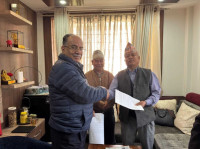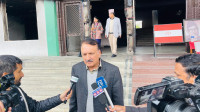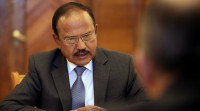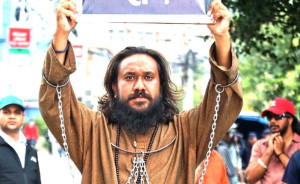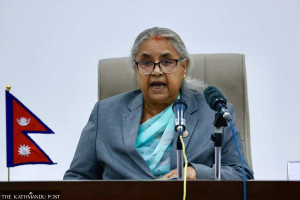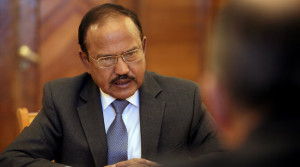Politics
Experts stress clear rationale, broad talks on constitution revision
An analyst says shrinking the scope of proportional representation would make Khas-Arya a more dominant force in Parliament.
Binod Ghimire
The Nepali Congress and the CPN-UML on Monday night inked a deal to form a new ruling alliance by ousting the current Pushpa Kamal Dahal government while also agreeing to amend the Constitution of Nepal promulgated just nine years ago.
Though the country’s two largest parties are yet to make the details of the deal public, their leaders claim they have unanimously agreed to revise some constitutional provisions, mainly related to the electoral system.
The ruling CPN (Maoist Centre) has come out strongly against the agreement to revisit the constitution, calling it a regressive move aimed at reviving the 1990 constitution.
The Congress and the UML, however, have rubbished the allegations, claiming that their plan to amend the statute is for the country’s good. “The amendment is for stability, which will drive the country on the path of prosperity and development. Some comrades find contextual amendment regressive but I say it is a progressive step,” said Congress chief whip Ramesh Lekhak while addressing a programme on Saturday.
The constitution is a living document which can undergo revision to suit the changed context without altering its core values. Different provisions in the statute could be amended but only through a broader consultative and legitimate process, say experts.
“The constitution amendment needs proper homework and larger acceptability,” Bipin Adhikari, a professor at the Kathmandu University School of Law, told the Post. “Trying to amend it through an amendment bill registered by the two large parties will only give room for extremist forces to play. A well-thought-out process must be adopted; it cannot be done in a hurry.”
He said, first, an expert panel must be constituted to properly study what changes are really required, based on an assessment of the implementation of the constitution in the past nine years. The Congress and the UML need to have an agreement on the content, and then look for national consensus on the issue. “The amendment should be done with a broader objective of strengthening the federal republic.”
Some constitutional experts agree that the electoral system needs to be revised for stability. Talking to the Post last month, senior advocate Purna Man Shakya, who also teaches at Nepal Law Campus, said that for greater stability, the electoral system, at least in the provinces, needs to be changed. However, unlike the Congress and the UML, who want changes in both tiers of government, Shakya said, “The new system can be adopted at the federal level if it first succeeds in ensuring stability at the provincial level.”
But not everyone agrees that adopting a full first-past-the-post system for the House of Representatives, as many in the Congress and the UML seem to contemplate, will ensure stability. They rather claim that it has been proven wrong on different occasions in the past.
“We have evidence that the FPTP alone doesn’t ensure stability. The Congress won the majority in 1959, 1991 and 1999. Was the country stable then?” questions Tula Narayan Shah, a political analyst. He calls the claim of stability through constitutional amendments dishonest, which, he alleges, is being thought of with the intent of establishing the Khas-Arya domination in the House.
The group had 70 percent representation in Parliament until the proportional representation system was adopted, after which it fell to 35 percent in the first and the second Constituent Assembly, at a time when only 40 percent of lawmakers were elected directly, according to Shah.
“This is why the FPTP’s proportion was increased to 60 percent in the 2015 constitution, which increased the Khas-Arya share to 55 percent,” he said. “A fully FPTP system will allow this community to maintain a hegemony in Parliament.”
Stating that class, power connections, caste and gender are the four dominant factors to win direct elections, the minority groups will be sidelined if the proportional representation system is eliminated, Shah added.
The mixed electoral system was adopted after the people’s movement of 2006, after a realisation that only a proportional system can ensure the representation of the marginalised and minority communities. The Maoist Centre and the Madhesh-based forces had pushed for it.
Senior Advocate Adhikari, who also is a constitutional expert, said the constitution should not be amended without the Maoist Centre and the Madhes-based parties on board.
In the view of some experts, the constitution can be amended broadly on five issues. First, provincial boundaries can be redrawn. A separate Madhesh Province was created but the grievances of the Tharu community were neglected. This can be addressed. Second, revision in the electoral system is possible but without killing the spirit of inclusion and representation.
Similarly, different constitutional commissions have failed to perform effectively in the absence of proper coordination and with duplication of jurisdiction. That can be adjusted through amendments in the statute. Also, implementation of the fundamental rights are subject to making law now. That needs to be corrected, making sure they are implemented with an immediate effect.
Also, there should be delineation of electoral constituencies based on population while also taking the geographical area into consideration, according to the experts.
“Rigorous homework and proper justification are needed for the amendment,” said Adhikari. “For broad legitimacy, the parties, after listing out the necessary amendments, can take them to the people at the next general elections.”




 20.12°C Kathmandu
20.12°C Kathmandu
